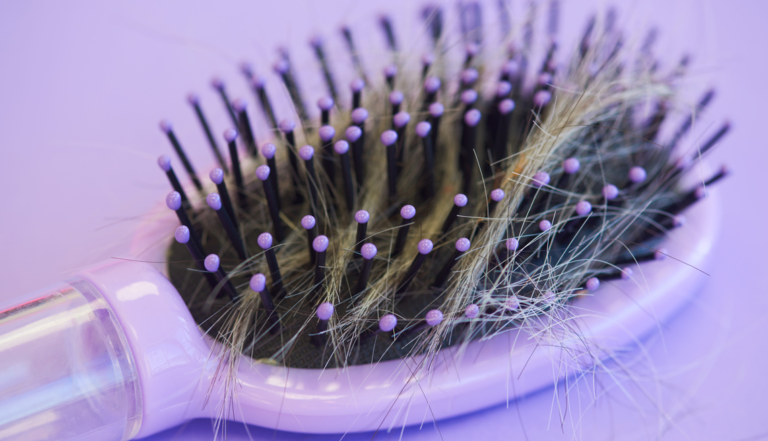Frequently wearing hairstyles like braids or tight buns can put strain and stress on your hair follicles for long periods of time, which can lead to a type of permanent hair loss called traction alopecia.
Several serious diseases also attack hair follicles, says Robert Brodel, a dermatologist at the University of Mississippi Medical Center.
Alopecia areata is an autoimmune disease that causes hair to fall out in nickel- or quarter-sized patches. Bald spots may be visible on the scalp. “The body’s immune system is attacking the hair,” says Braudel.
Alopecia areata tends to have no symptoms other than hair loss. “There’s no itching, irritation, or pain. You just notice that your hair is falling out in patches.”
In contrast, cicatricial alopecia is another autoimmune disease that causes hair loss, often accompanied by itching, tenderness, and scaling of the scalp. Scarring alopecia is the most serious type of hair loss because it permanently destroys the hair follicles, says Mirmirani.
If I have alopecia, will my hair grow back?
Dermatologists say a variety of treatments are being developed to regrow hair and thicken existing hair in alopecia patients. Its effectiveness depends largely on the type of alopecia and how early treatment is started.
In general, dermatologists say the sooner you start treatment, the more options you have and the better the results.
What is the best treatment for alopecia?
With so many over-the-counter supplements and products that claim to reverse hair loss, it can be difficult for patients to determine which ones work and which don’t.
Dermatologists say small, limited studies have found that certain supplements and shampoos may help. However, if you are experiencing hair loss, your best bet is to see a board-certified dermatologist who can identify the cause of your hair loss and recommend a treatment plan.
The following five evidence-based treatments are proven to help reverse hair loss.
1. Intralesional injection
If alopecia areata is caught early, when there are only a few small bald spots, your doctor may inject steroids into the area to stimulate hair regrowth. “We injected small amounts of steroids directly into the dermis,” says Dr. Braudel. “You start to see hair growing in that tuft. It works really well.”
But if patients wait too long to receive treatment, “the problem is you can’t inject 10,000 areas with a needle,” Braudel says.
2. Minoxidil topical preparation (Rogaine and generic)
Extensive research has shown that applying these over-the-counter creams and foams to the scalp daily is effective in stimulating hair growth, increasing hair density, and stopping hair loss over time. Most users see results after about two months of consistent use.

